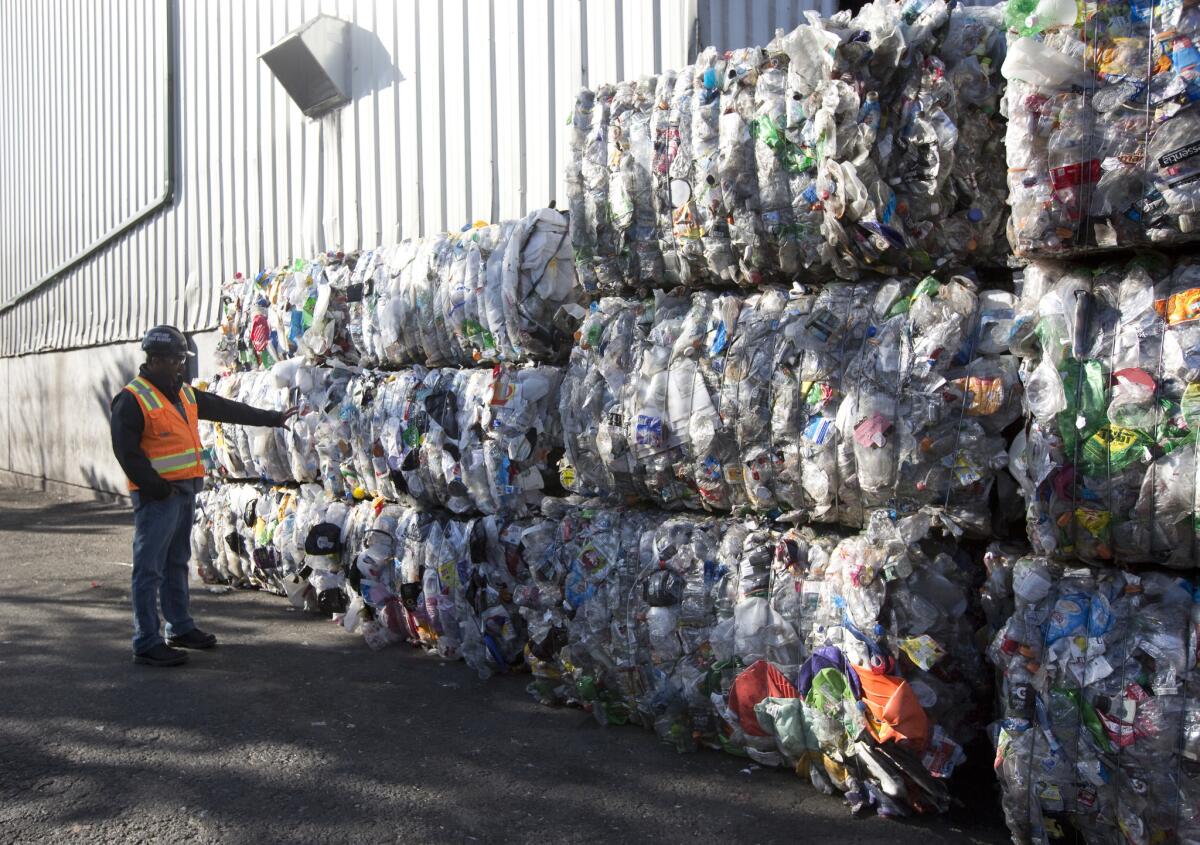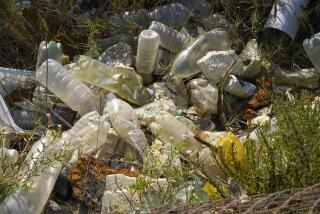Editorial: The EPA’s new recycling plan is straight out of 1985

The breakdown in global recycling markets and the growing public alarm over plastic waste in the ocean has prompted appropriately consequential action across the globe.
Canada, Peru and Kenya are planning to ban all disposable plastic packaging in the next two years. Britain and the European Union have adopted comprehensive plastic reduction strategies that target the most ubiquitous plastic sources, such as straws and plates, and force plastic manufacturers to pay for cleanup costs. Other countries are looking at similar initiatives.
For the record:
4:00 p.m. Nov. 27, 2019This editorial incorrectly reported that Canada and Peru are looking to ban all single-use plastic in the next two years. They are banning the single-use plastic items determined to be most dangerous to the environment and adding restrictions on other items.
In the United States, which produces 267.8 million tons of trash each year, the plan is to just do recycling a little bit better.
That at least is the message coming from the U.S. Environmental Protection Agency, which this month released a recycling action plan that barely mentions the most problematic source of trash, disposable plastic. Instead, the plan focuses on four main areas for action: increasing public education about the benefits and methods of properly disposing empty water bottles and milk jugs, encouraging cities to do a better job of collecting and sorting recyclable trash, developing more effective ways of measuring recycling efforts, and finding and developing new markets for recycled products.
Those are not bad ideas, of course. It’s worthwhile to encourage the development of domestic recycling plants, given that the international market has collapsed. Certainly the message to consumers about what’s recyclable — and what’s not — could be clearer. The items that are collected curbside, for example, vary from city to city, and people are justifiably confused and end up tossing anything that seems potentially recyclable into their recycling bins. Mixing recyclable material with non-recyclable material is considered contamination, and high contamination rates prompted the largest buyer of U.S. recycled material, China, to stop accepting most plastic and paper waste as of 2018.
But these aren’t long-term fixes to the recycling crisis. They’re just strategies to hide the effects of an unsustainable consumer culture for a little bit longer while letting the industries that produce and employ single-use packaging off the hook. This was predictable; the working group for the recycling plan was dominated by representatives from business and industry groups such as the American Chemistry Council, Dow Chemical Co. and ExxonMobil (plastic is a petroleum product). It’s not in the best interest of plastic manufacturers to make less of their product or to have to cover the cleanup costs.
We can do better than this woefully inadequate federal plan of action, and we should.
The first thing is to accept that the U.S., like other countries, has a trash problem that is only getting worse, and that the biggest culprit is the single-use plastic packaging on food and other consumer goods. That waste is difficult and often impossible to recycle. Decades ago, recycling seemed like a good solution for disposable items like plastic bottles, cardboard boxes and aluminum cans, and one that environmentalists, industry and the public could support. But the amount of plastics produced has swamped our best efforts to recycle them.
The EPA’s own numbers tell that story. Data on national recycling rates, also released this month, show that a declining percentage of single-use plastic waste is getting recycled in the United States; the rate was only 13% in 2017 (or 8.4% if you include all types of plastic). By comparison, 66% of paper used in the U.S. and 27% of glass was recycled in 2017. This was the sad state of plastic recycling even before China stopped accepting most of our plastic recyclables. When the 2019 statistics come out, the rate is likely to be significantly lower.
The second step is recognizing that the federal government is not coming to the rescue anytime soon. Although there are some legislative efforts aimed at reducing disposable plastic, they aren’t likely to go anywhere until there’s a president and Congress ready to admit the U.S. has a plastic production problem and committed to tackling it.
Meanwhile, it will be up to forward-thinking states like California to take action to reduce plastic trash and provide the leadership on this issue that the federal government will not.
More to Read
A cure for the common opinion
Get thought-provoking perspectives with our weekly newsletter.
You may occasionally receive promotional content from the Los Angeles Times.










